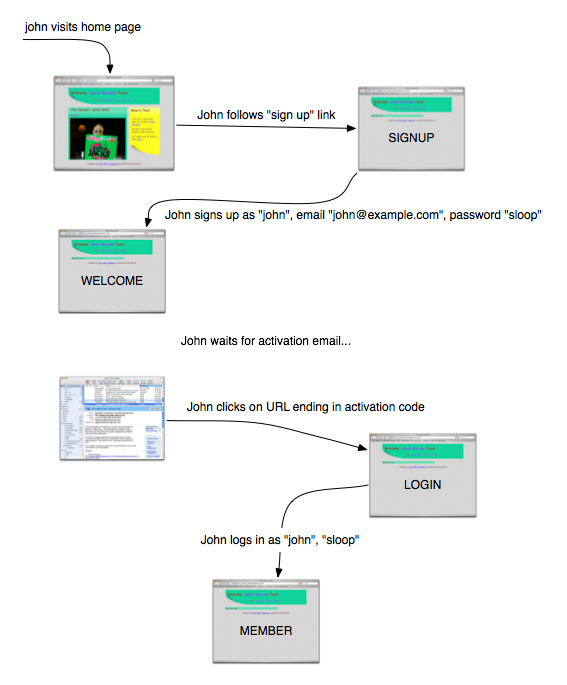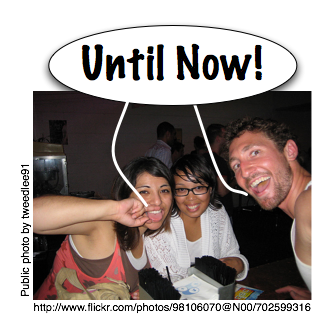Graphical workflow tests for Rails - alpha version released
For many web apps, it’s important to get the user’s workflow right. Consider a Rails app that uses some variant of acts as authenticated to handle user registration and login. Here’s one way of describing an example of normal registration:
John visits the home page.
John follows the “sign up” link.
(John is now on the signup page.)
John signs up as “john”, email “john@example.com”, password “sloop”.
(John is now on the welcome page.)
John waits for activation email…
John clicks on a URL ending in an activation code.
(John is now on the login page.)
John logs in as “john”, password “sloop”.
(John is now on the member page.)
Here’s another:

Which is better? If I were trying to design the workflow—get it so that it’s right for the users—I’d much rather use a picture (whether drawn in OmniGraffle, as this was, or on a napkin or whiteboard.) Why?
-
It’s easier to “zoom out” from a picture, to ignore the details. When I do that, I’m more likely to notice missing workflows or stupidities in the ones that I have.
-
As a designer, I’ll soon have to explain my thinking to others. It’s easier to explain a picture because it’s sitting right there in front of both of you, visible in two-dimensional space. It’s simple to refer to something you already mentioned: point at it. A wealth of context gets recalled by that simple gesture. If it’s not readily recalled, you can decorate the graphic with something that jogs the memory. Pictures make for a much more fluid way of communicating.
-
Our minds are in bodies; and bodies have minds of their own. We think kinesthetically and visually, not (just) by banging propositions together according to the rules of some kind of logic. The more ways you think about something, the fewer mistakes you’ll make.
But there’s one big disadvantage of pictures from the point of view of the test-driven (behavior-driven, example-driven) programmer: they’re not executable.

I’ve released an alpha version of an open-source library that converts such pictures into Ruby tests. Below the fold, I show how the workflow picture becomes a Rails integration test.
✂——✂——✂——✂——✂——✂——✂——✂——✂——✂——
(more…)






